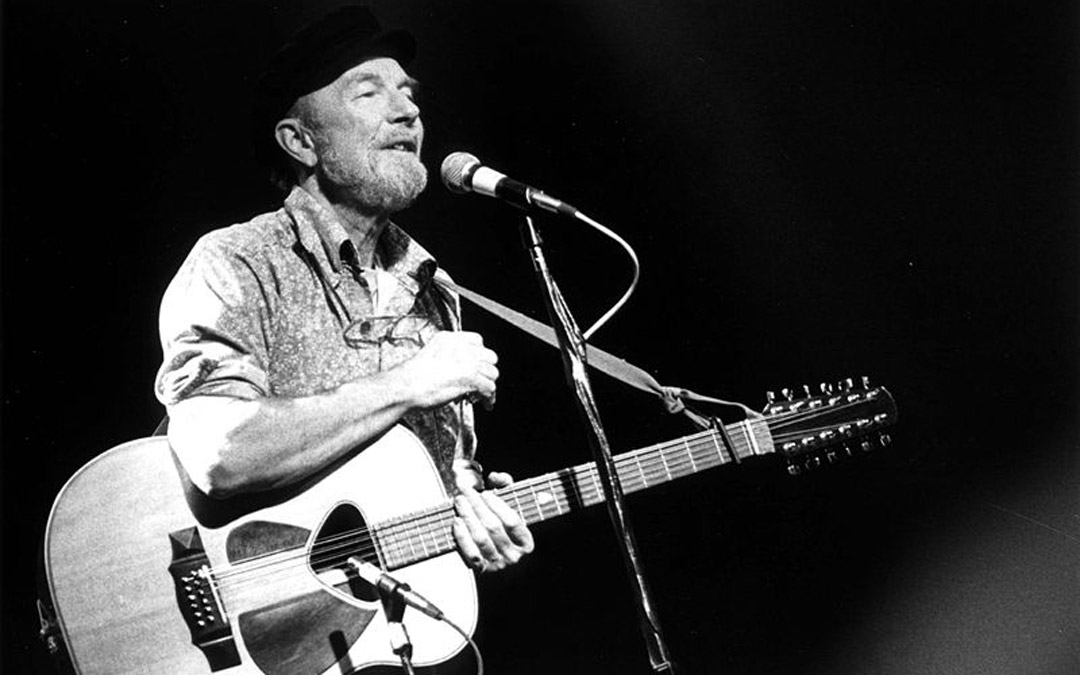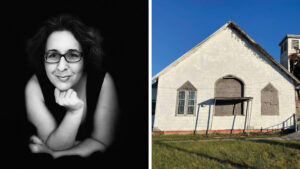Bagels and banjos. Hebrew and harmonicas. Isaac Bashevis Singer and Pete Seeger.
You could say that Jewish culture and the American folk music tradition are a natural fit.
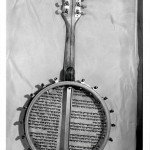
The staff at the Jewish Museum of Maryland realized that back in late 2015 and early 2016 when the East Baltimore complex served as the first stop of a national tour for the Rock and Roll Hall of Fame’s exhibition, “Paul Simon: Words & Music.”
Besides that acclaimed tribute to the life and career of the legendary artist who penned “The Sound of Silence” and “The Boxer,” the JMM presented a popular companion exhibit exploring the intersection between Jews and the folk music experience, with artifacts and information on such luminaries as Bob Dylan, Phil Ochs, Leonard Cohen, Theodore Bikel and Debbie Friedman, as well as impresarios and producers like Moe Asch, Jac Holzman and Izzy Young.
“The so-called ‘folk music revival’ of the 1950s and 1960s had its epicenter in Greenwich Village rather than Oklahoma or Tennessee,” says Marvin Pinkert, the JMM’s executive director. “The context for the success of Seeger and [Woody] Guthrie was embedded in the rising social consciousness of the Jewish community of New York, which supplied collaborators like The Weavers, venues like the Folklore Center, producers like Moe Asch, and most importantly an eager and passionate audience.”
Fast-forward to 2018 when the museum hosted the well-received “JMM Live!” series of musical performances, dramatic presentations, book talks and other types of programming. The folks at the JMM knew they were onto something.
“We decided to really build out from that, and this seemedlike a perfect time to do it,” says Trillion Attwood, the JMM’s programsmanager.
The result is the Baltimore area’s first-ever Jewish folk life festival, which kicks off Sunday, Feb. 9, and concludes Sunday, March 22, with events alternating at the museum, 15 Lloyd St., and next door at the historic Lloyd Street Synagogue.
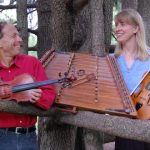
The six programs of the “JMM Live: Jewish Folk Life Festival” include a Feb. 9 performance of Sephardic and Ladino music by Turkish mezzo-soprano Lori Sen, with guitarist Jeremy Lyons and pianist Ying-Shan Su; a Mar. 1 concert of old-time, Celtic and world music by Baltimore area fiddlers Ken Kolodner and Elke Baker, with accompanist Alex Lacquement on bass and banjo; and a pair of special lectures on the life, career and mission of the late Pete Seeger, whose 100th birthday was observed and celebrated last May.
Pete, Woody & the Jews
On Mar. 19, Jeff Place, archivist and curator at the Smithsonian Center for Folklife and Cultural Heritage, will speak about “Pete Seeger and the Tribe,” regarding the folk icon’s relationship with the Jewish community.
Place, who lives in Anne Arundel County, recently won a Grammy Award for Best Historical Album for the six-CD collection and 200-page book, “Pete Seeger: The Smithsonian Folkways Collection.”
“A lot of the people that [Seeger] was around in New York and during the early folk revival years were Jewish,” says Place. “When he was blacklisted [during the McCarthy Era], he went underground and used to play at Jewish summer camps, like Camp Woodland [in upstate New York], and at Jewish schools. He also recorded six or seven Jewish songs, including ‘Tzena, Tzena, Tzena,’ of course, and recorded with [Yiddish singer, folklorist and song collector] Ruth Rubin.
“[Jewish culture and ethos were] all definitely part of his world, and he played in Israel several times,” he says. “Pete was a multi-culturalist before multi-culturalism was even around.”
On Mar. 22, Nora Guthrie, daughter of the fabled Dust Bowl balladeer, will discuss “What Pete Taught Woody: An Intimate Portrait of the Friendship and Working Relationship between Pete Seeger and Woody Guthrie.”
Although Seeger was seven years younger and less worldly than Guthrie, he imparted valuable lessons to the author of “This Land is Your Land,” she says.
“I grew up with Pete, and I knew his effect on Woody,” says Nora Guthrie, 70, a resident of Mount Kisco, N.Y. “Woody was a lone figure in many ways and could be a throwaway artist, but there were a lot of subtle influences that Pete had on Woody’s lyrics and book writings. Pete applied his influences and discipline on Woody. They came from very different backgrounds, but they had all of this interaction that informed both of them.
“Pete was crucial to Woody’s development,” she says. “He helped domesticate Woody and made him more palatable for a mass audience. Without Pete, we wouldn’t be talking about Woody.”
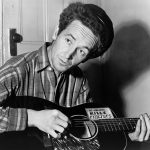
Nora Guthrie — who is the younger sister of folk singer Arlo Guthrie and granddaughter of acclaimed Yiddish poet Aliza Greenblatt — spoke to a sold-out audience at the JMM in November of 2015 during the “Paul Simon” exhibition run. Her upcoming talk at the museum will include a multi-media presentation, with archival photos, rare filmed interviews and music.
She says that New York’s progressive political and social milieu during the 1930s and 1940s greatly influenced her father and Seeger, both of whom came from rather strict Protestant backgrounds. She views that Greenwich Village scene and zeitgeist — with such folk legends as Lead Belly, Alan Lomax, Josh White, Brownie McGhee and Sonny Terry — as largely an outgrowth of the forward-thinking and intellectual climate of Jewish Eastern Europe.
“No one else would’ve recorded Woody but a guy like Moe Asch, a young Jewish socialist who was born in Poland and was the son of the great [Yiddish writer] Sholem Asch,” Guthrie says. “Moe got it. He understood Woody. … [Seeger and Guthrie] both came to New York and grounded themselves there, and to me that movement is linked to Poland and Eastern Europe and people like Moe Asch. He was a seminal figure.”
Positively Lloyd Street
The festival will also feature performances on Mar. 15 by violinist and singer Eléonore Biezunski and klezmer violinist and accordionist Deborah Strauss, focusing on the depth, complexities and rich heritage of women’s Yiddish folk songs.
“These songs address women’s experiences and convey that context and understanding,” says the Parisian-born Biezunski, 35, who is the associate sound archivist for New York’s YIVO Institute for Jewish Research. “The better-known Yiddish songs are theater songs, which were mostly written by men. Women were not allowed to perform songs in public because of kol isha [the prohibition against women singing in front of men], only in their homes, so this is a more intimate repertoire, like that of a lullaby sung by a mother to a child. Most of the songs we will perform are love songs and workers’ songs, areas in which women gained agency and control over their lives. So it’s a reflection of a wider context. …
“Together, Deborah and I are going to arrange and perform these songs,” she says. “We try to give a lot of information, because we want people to really relate to what is told and not just hear the music.”
For its sole non-music-related event, the festival will present a Feb. 19 seminar about the traditional Jewish folk art form of paper-cutting, led by Baltimore-based artist, puppeteer and designer Katherine Fahey.
The JMM’s Attwood says she expects the festival to appeal to a wide variety of music lovers, folk fanatics and art aficionados in the area.
“I’m hoping that we attract a varied audience,” she says. “Wewant it to have a central folk theme that appeals to all kinds of individuals,so the programming is varied and extensive. Anyone who likes music or is interestedin Jewish history or women’s history will be interested in this series. I hopeit’ll have broad appeal.
“Baltimore enjoys a fine music scene,” Attwood says, “so hopefully people will come down and hear some brilliant music and enjoy these fascinating talks.”
For information about the “JMM LIve: Jewish Folk Life Festival,” call 410-732-6400 or visit http://jewishmuseummd.org/events/jmmlive/.

